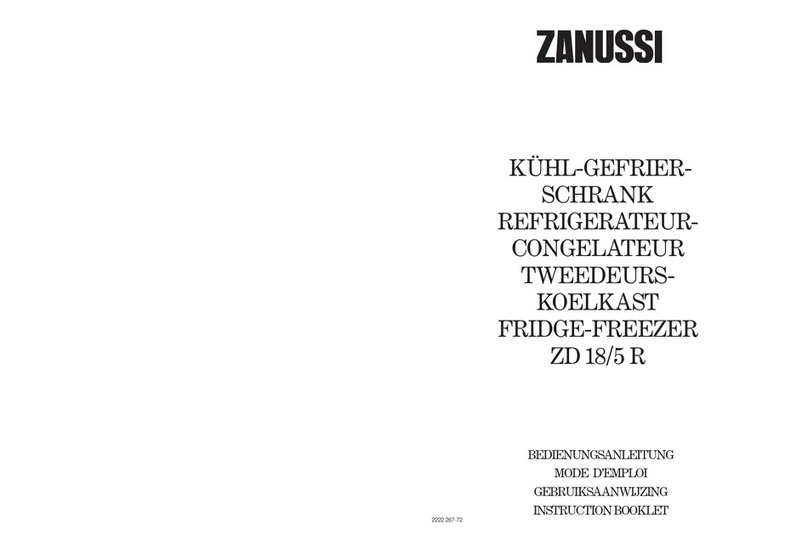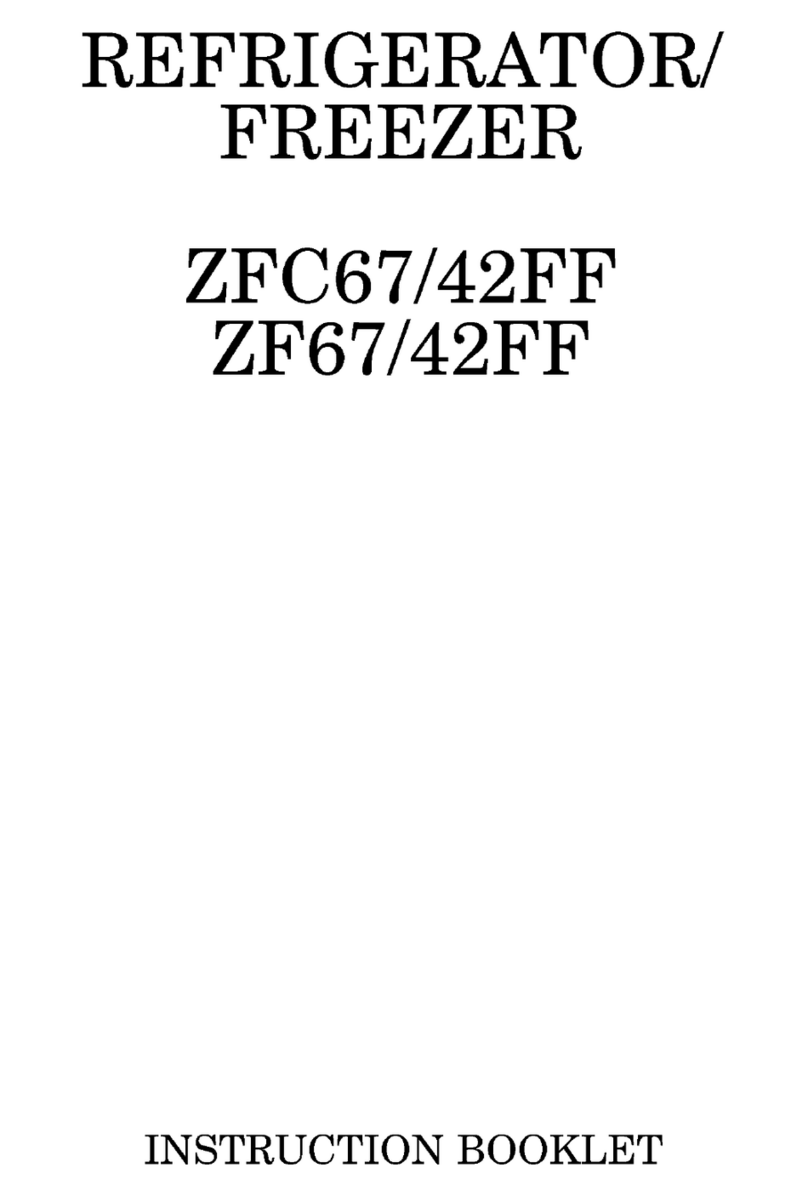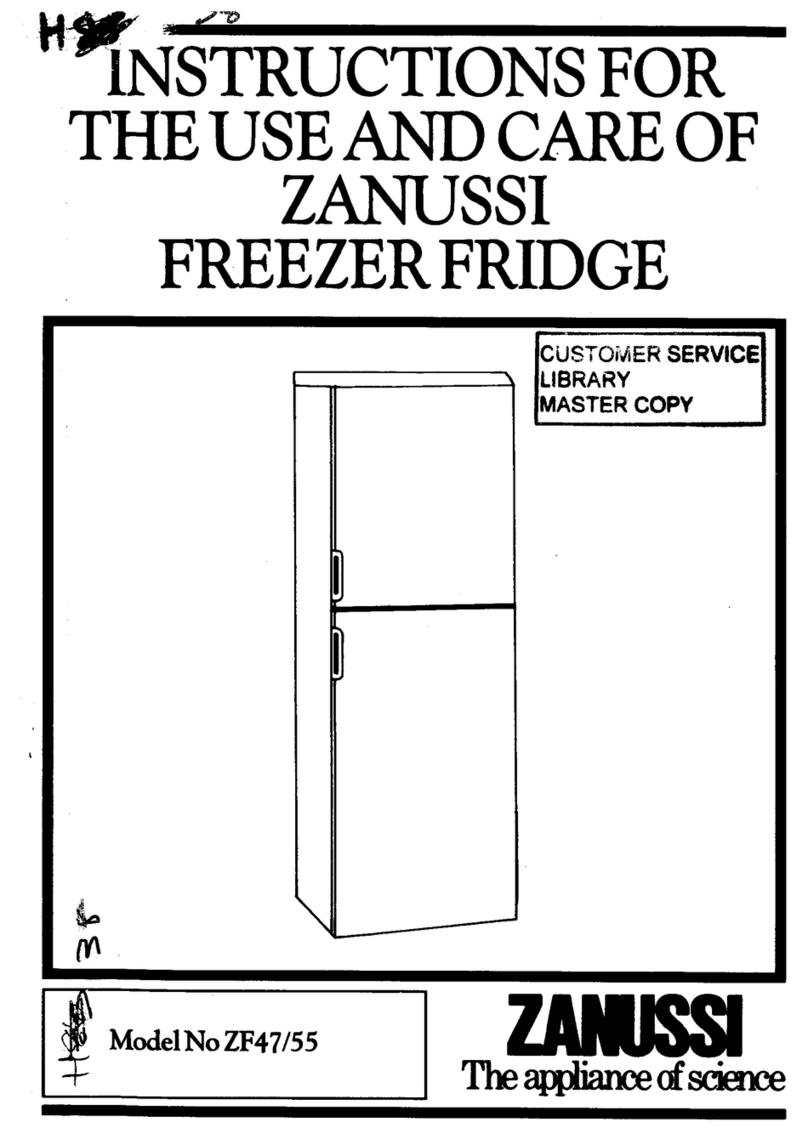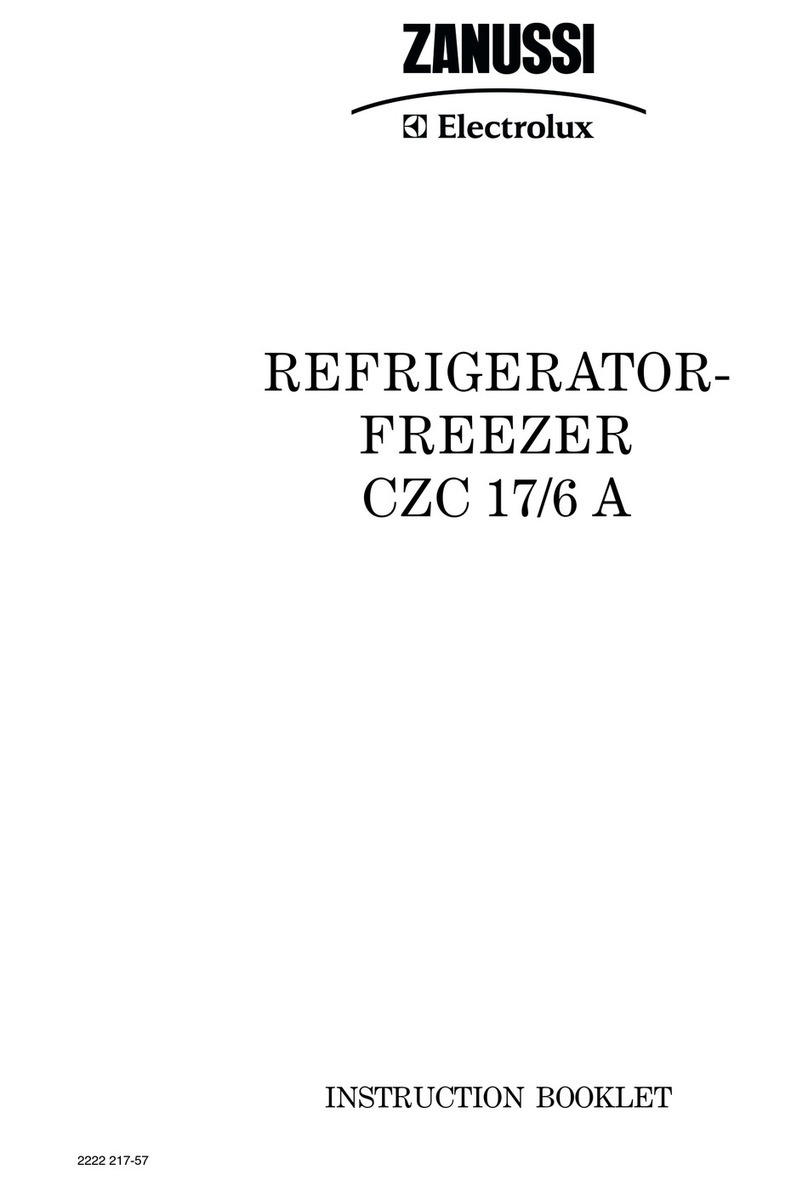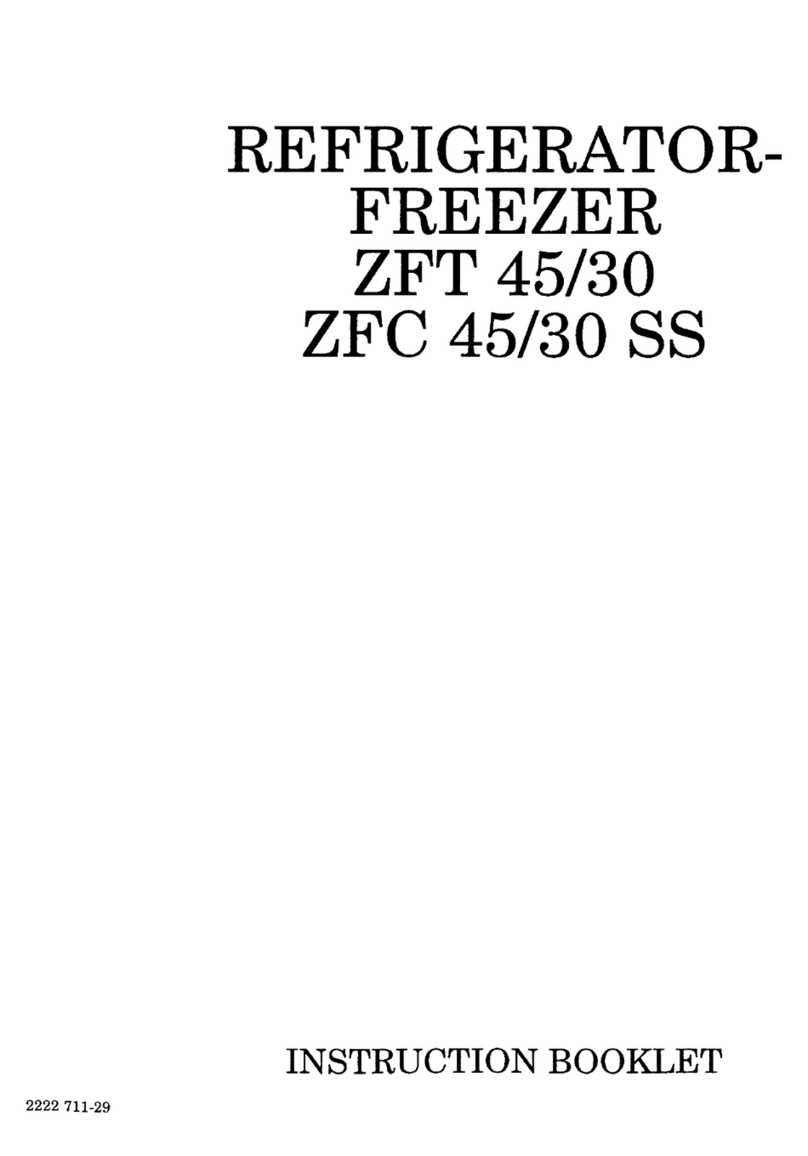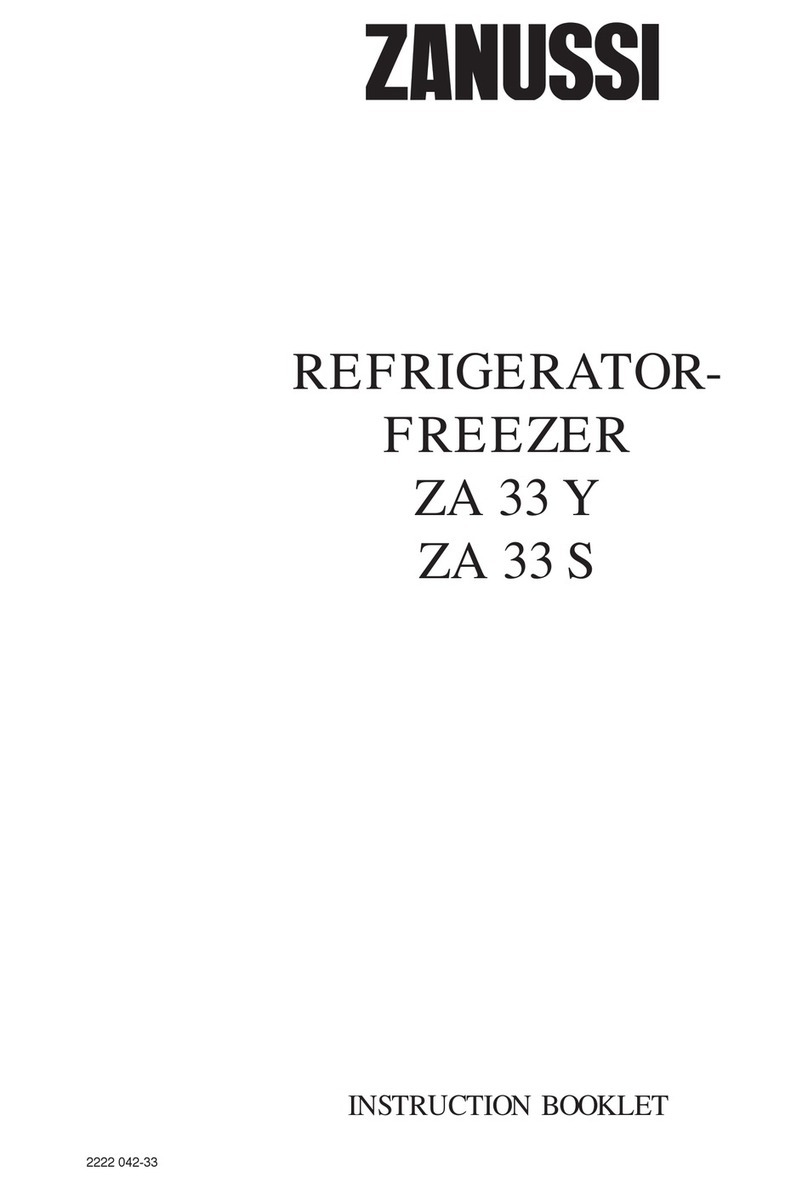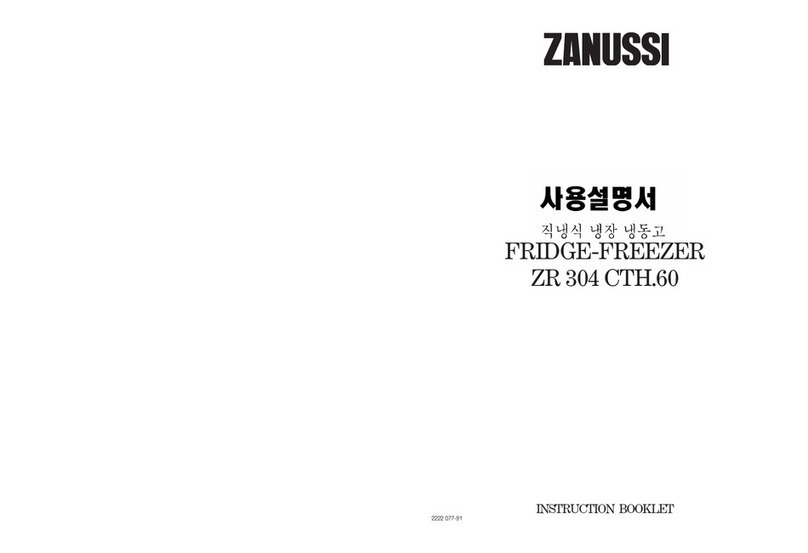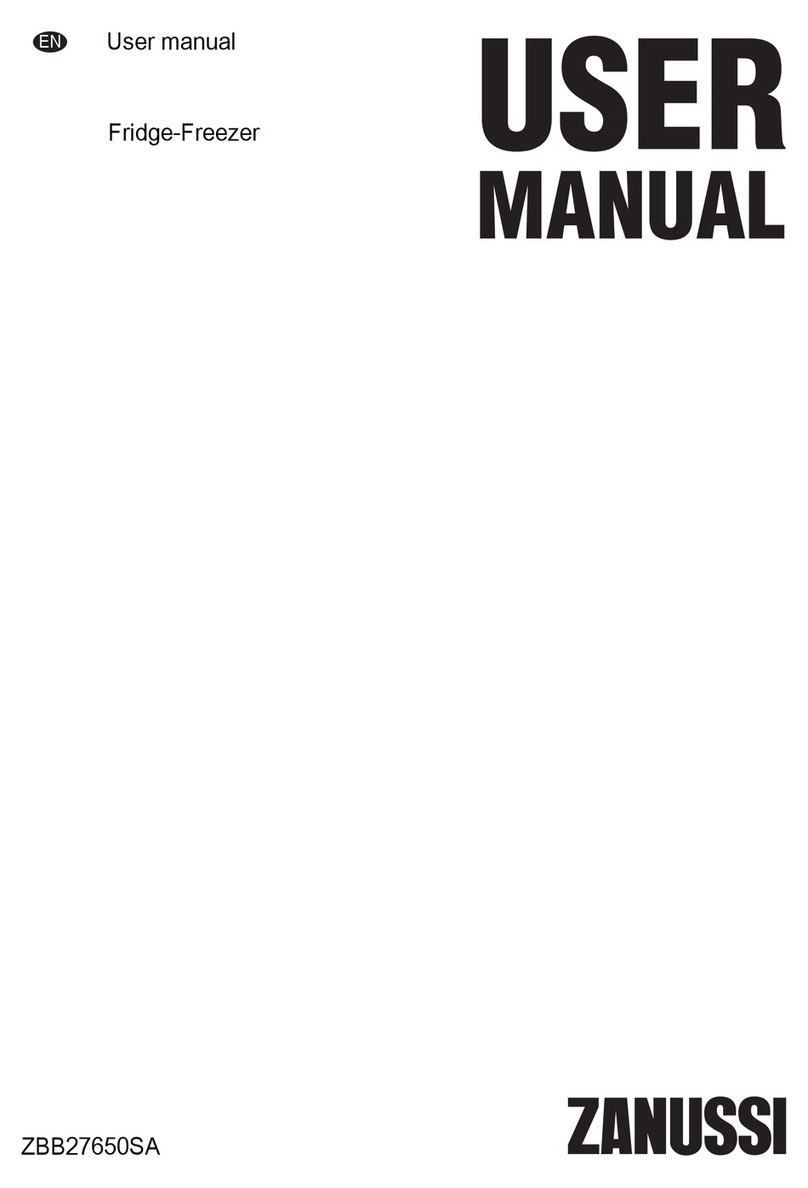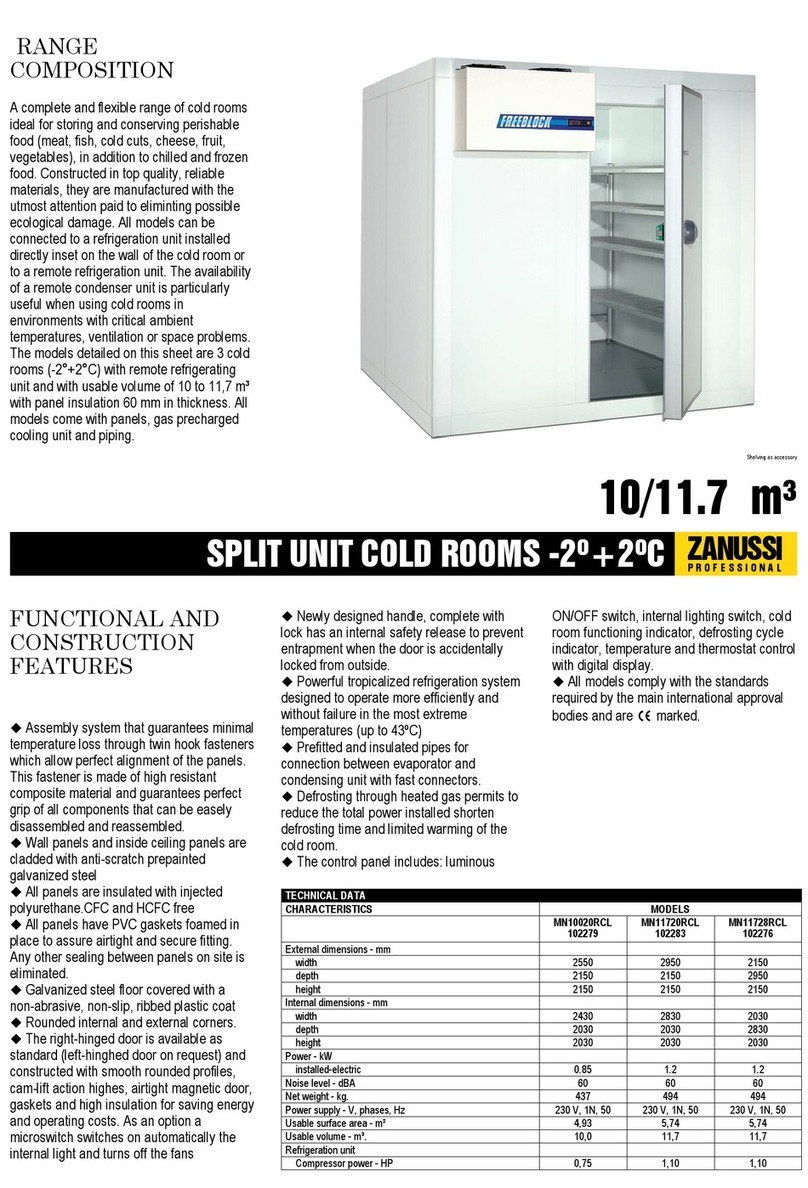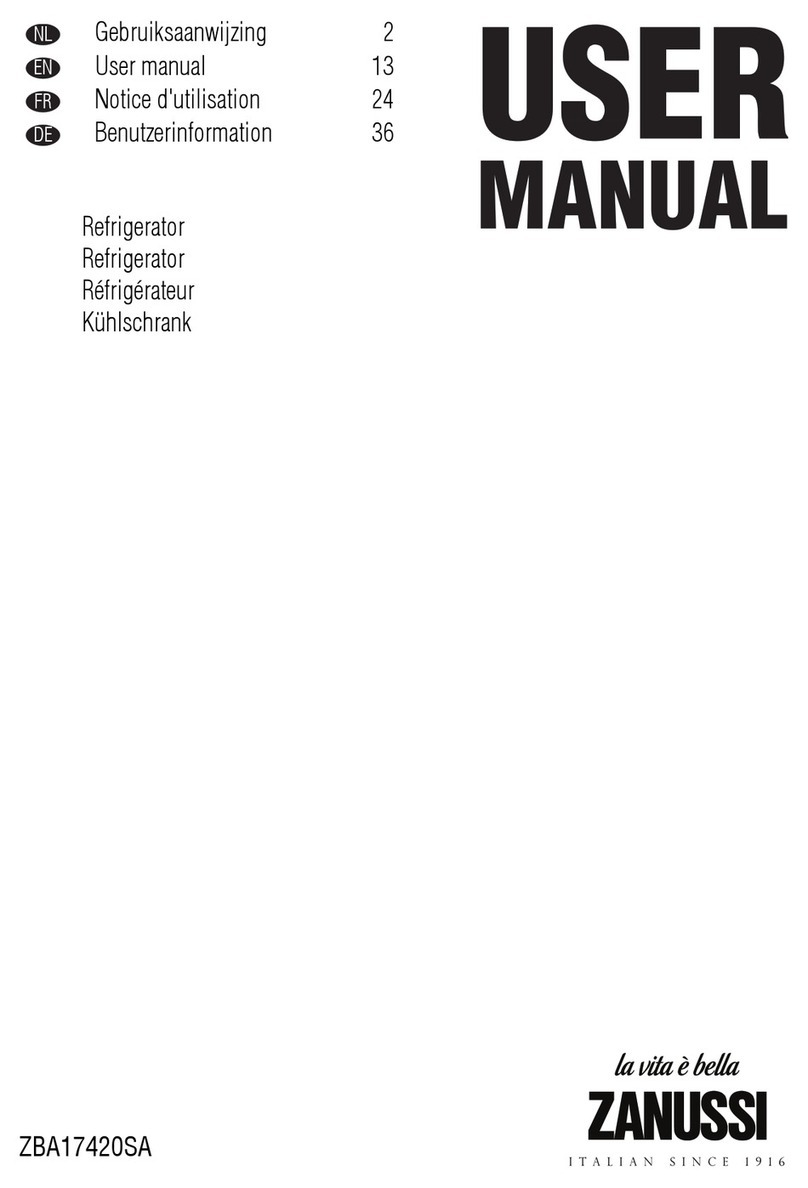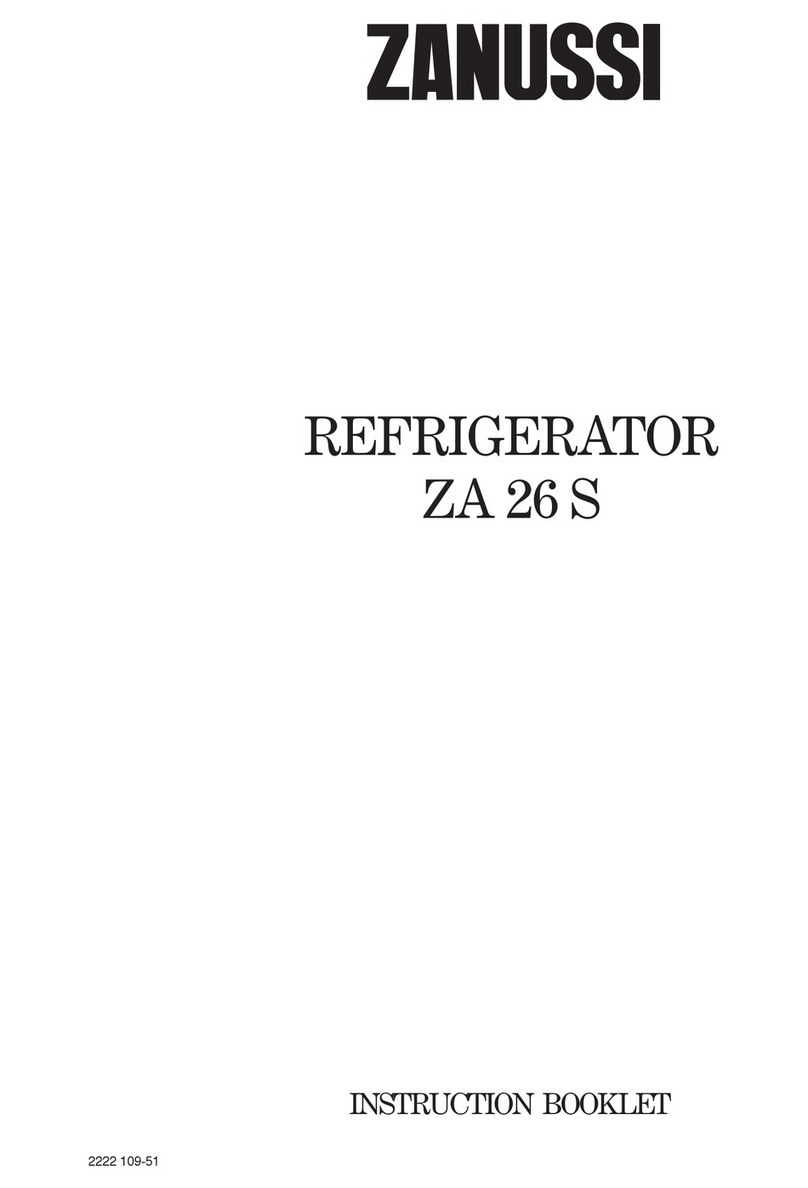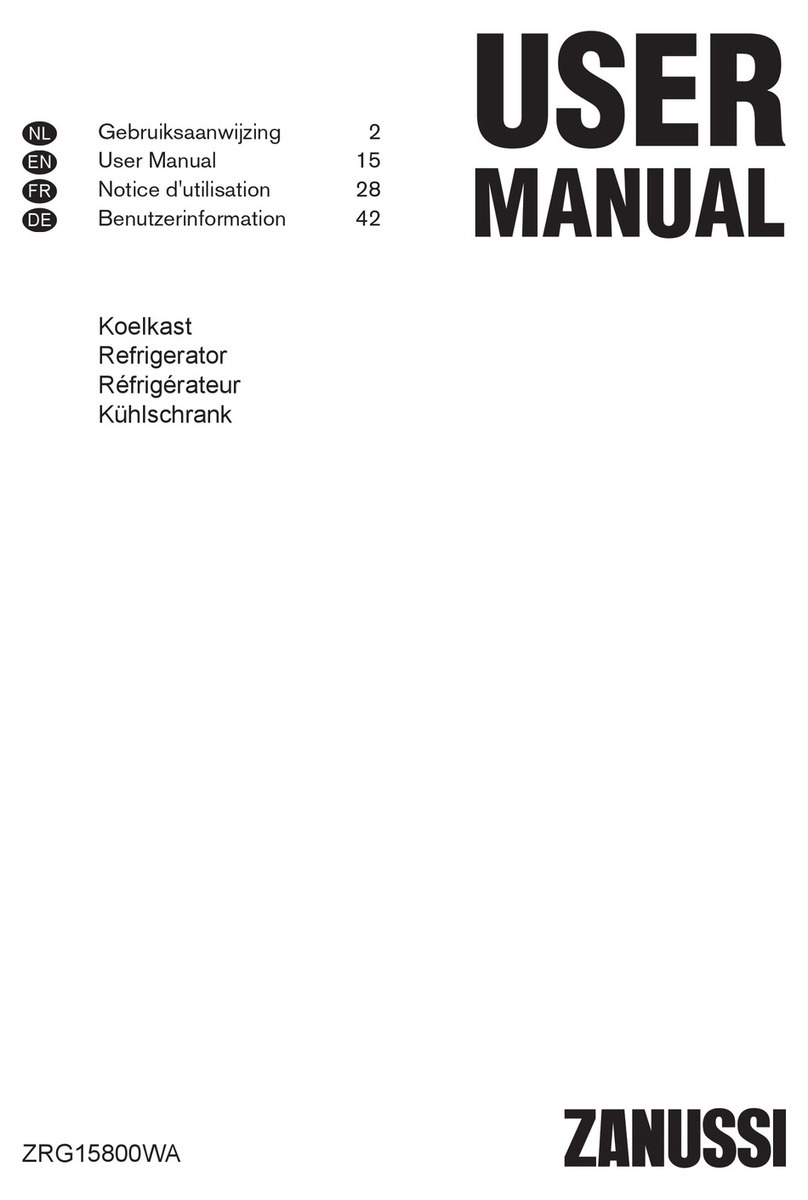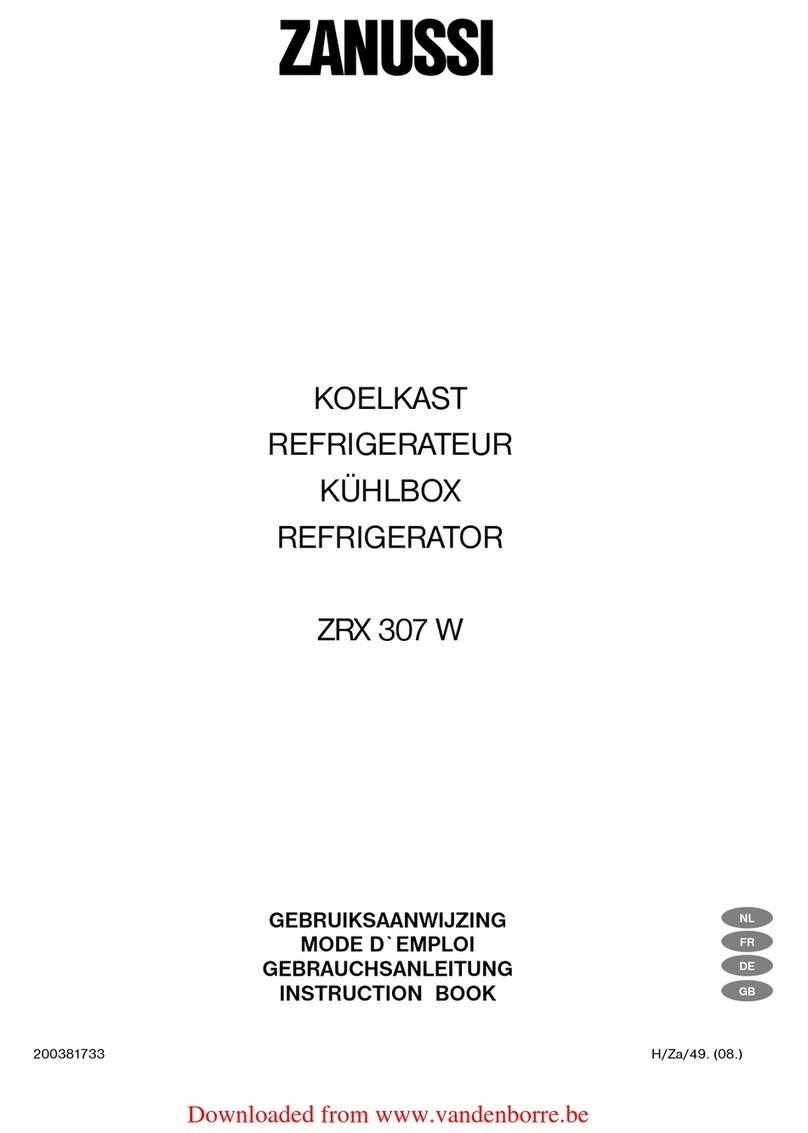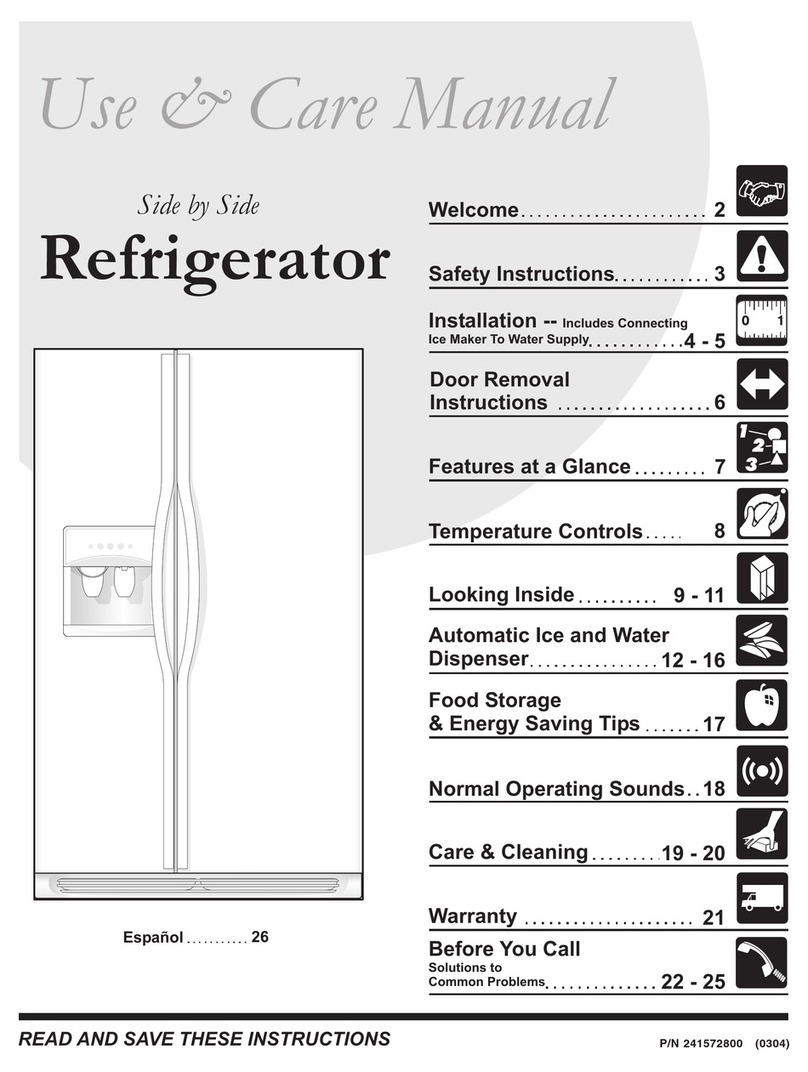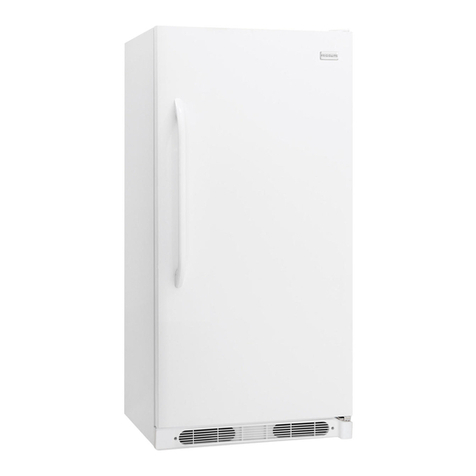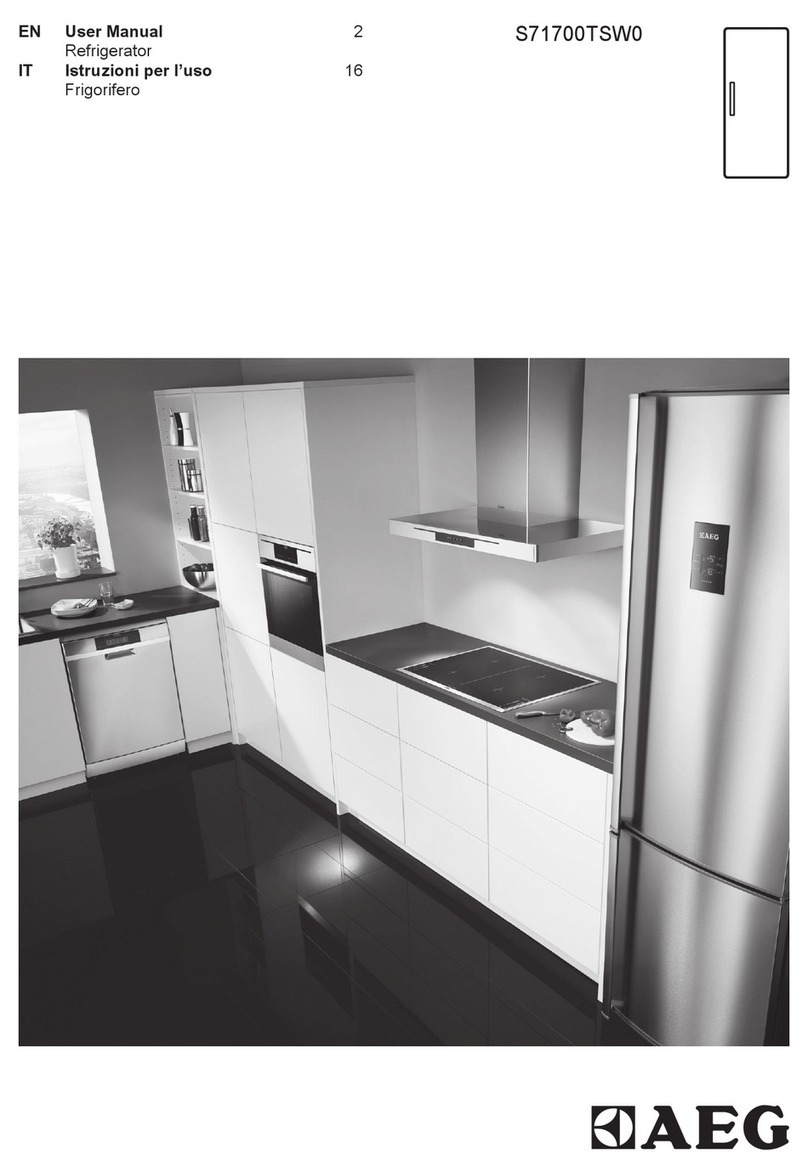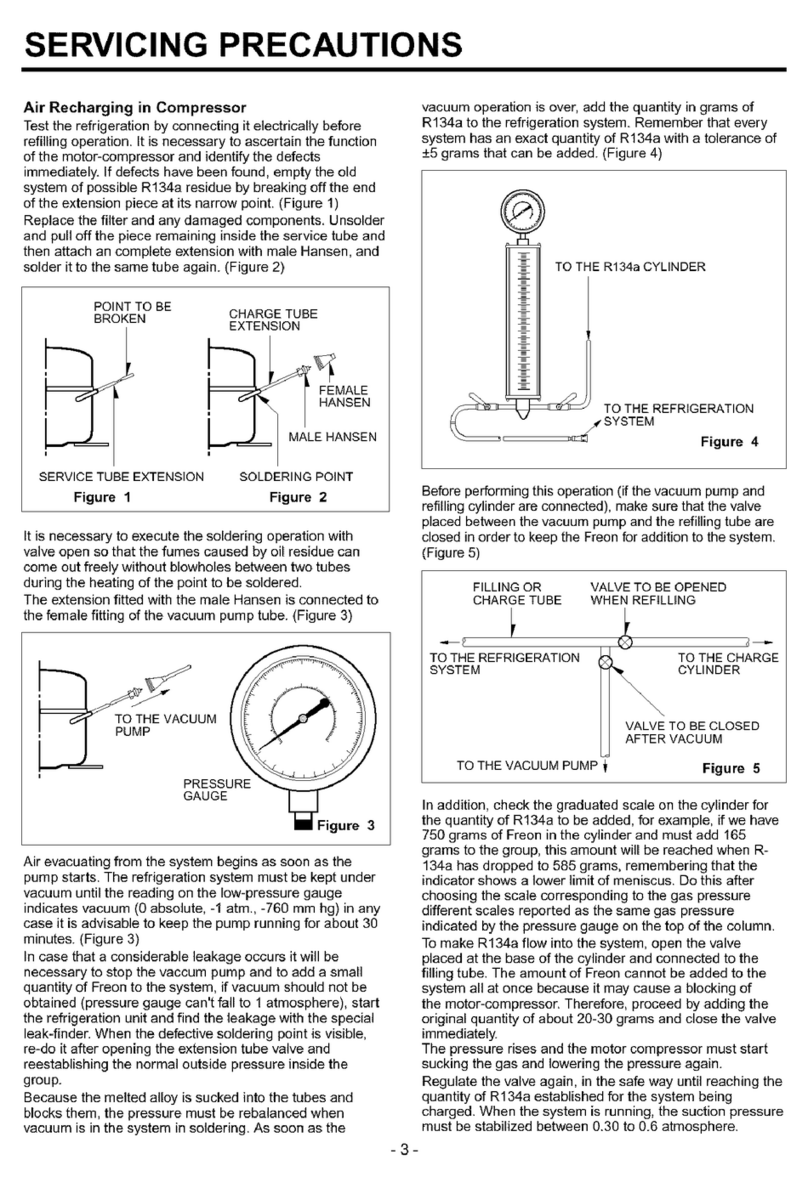
5
Using the Appliance
This appliance is designed for domestic
use only, specifically for storage of edible
foodstuffs.
This appliance is designed to operate in ambient tem-
peratures (surrounding air temperature) between 10°C
(50°F) and 32°C (90°F).
If these temperatures are exceeded i.e. colder or war-
mer, the appliance may not operate correctly.
Before Use
Remove all transit packaging.
Wash the inside of the appliance with lukewarm water
with a little bicarbonate of soda added (5ml to 0.5 litre
of water). Do not use soap or detergent as the smell
may linger. Dry the appliance thoroughly.
Do not use detergents, abrasive powders,
highly perfumed cleaning products, wax
polishes or products containing alcohol.
Starting the Appliance
1. Allow the appliance to stand for 2 hours after insta-
llation.
2. Plug in the appliance and switch on at the mains
supply. Press the ON/OFF button continuously for 3
seconds. The appliance will start operating after a 4
minute delay and the internal light will switch on.
The ON/OFF button will illuminate green and the
Freezer and Fridge control knob surrounds light up.
The temperature alarm (a beeping sound) may
come on during the start up phase. If this happens
push the temperature alarm button.
3. Set the thermostat controls for the fridge and free-
zer compartments. See Control Panel section.
4. To ensure safe food storage, allow the appliance to
operate with the doors closed for at least 3 hours,
before loading with food.
Freezer Compartment
The freezer will store frozen food at -18°C or colder
allowing for long-term frozen food storage and freezing
of fresh food.
Freezing Fresh Food
The maximum quantity of food that can be frozen in
24 hours shown on the rating plate and in the tech-
nical specifications section of this instruction book.
When freezing fresh foods, press the fast freeze
button 3 hours before placing the food into the fre-
ezer compartment.
When the food is frozen, switch off the fast freeze
function. The fast freeze function will self cancel
after 36 hours.
The Temperature alarm may sound if a lot of new
food is put into the freezer, due to a rise in tempe-
rature. The alarm will switch off automatically, as
the freezer temperature drops. Push the alarm but-
ton to switch off the audible signal.
Frozen Food storage
The freezer will store frozen food at -18°C or colder
allowing for long term frozen food storage and fre-
ezing of fresh food.
Pre packed commercially frozen food should be
stored in accordance with the manufacturers ins-
tructions for a 4 star frozen food compartment and
should be put in the freezer as soon as possible
after purchase. Your freezer provides for long-term
storage which generally means up to 3 months but
the length of the time can vary and it is important to
follow the recommended times shown on packets
of commercially frozen food.
Refrigerator Compartment
This compartment is designed to store drinks and
fresh food. The inner temperature is normally uni-
form and is kept cool by cold circulating air. Try to
avoid putting food products flush against the air
vents at the back of the fridge as this could cause
the foods to freeze.
Chill Compartment
The temperature is kept typically at 1-2 degrees
lower than the average temperature in the fridge.
Use the compartment for foods that are marked
typically for storage at 0-5°C for longer preserva-
tion. Adjusting the fridge temperature to cooler or
warmer affects the chiller temperature in the same
way. Avoid stacking large amounts of warm food on
top of already cold food, as this will raise the tem-
perature of the food previously stored in the chiller.
Do not use the chiller, as a zone for rapid cooling at
it is not designed for this.
